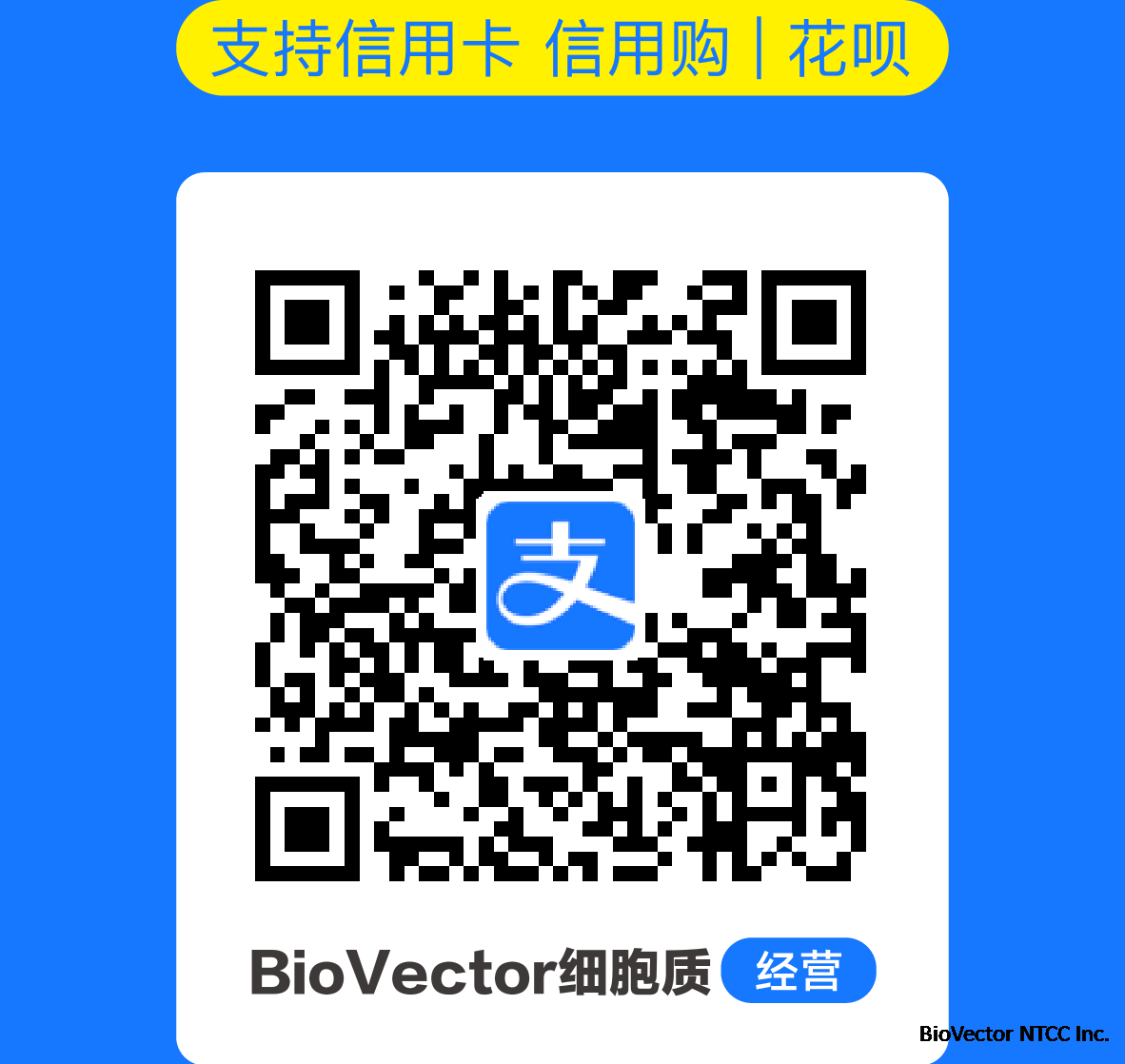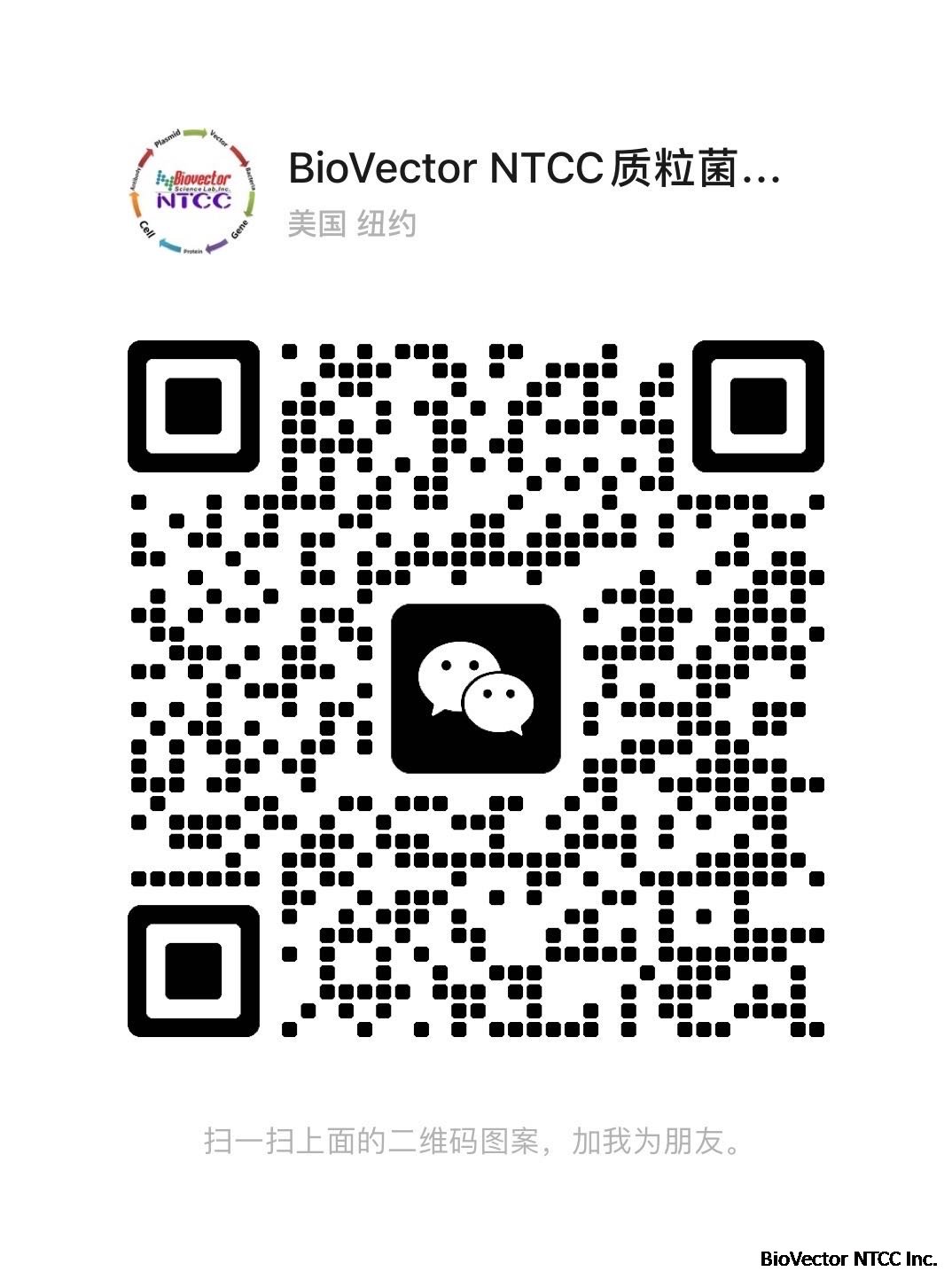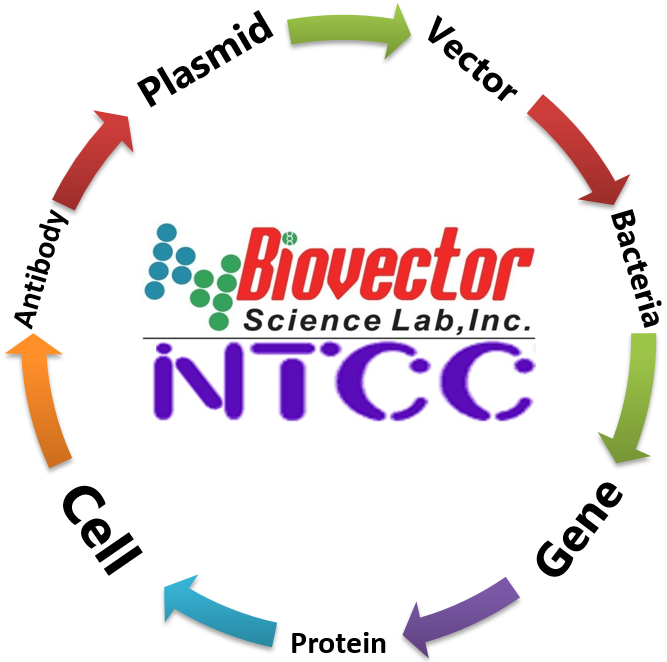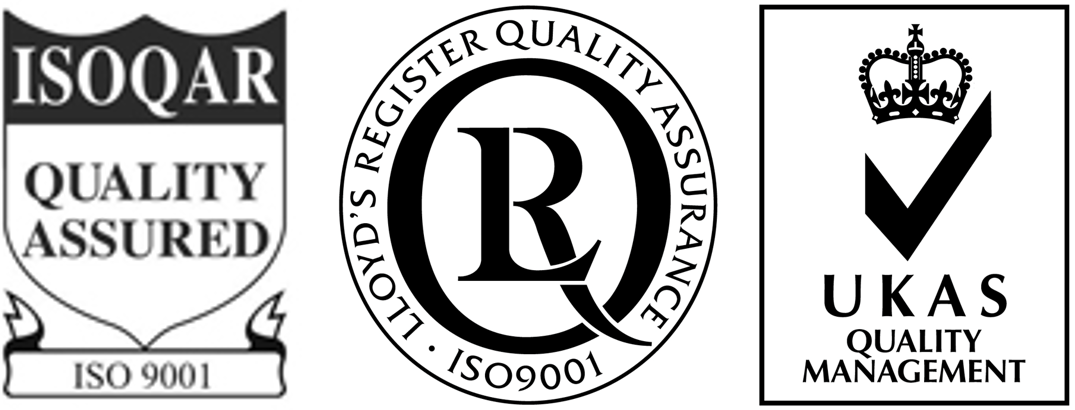- BioVector NTCC典型培养物保藏中心
- 联系人:Dr.Xu, Biovector NTCC Inc.
电话:400-800-2947 工作QQ:1843439339 (微信同号)
邮件:Biovector@163.com
手机:18901268599
地址:北京
- 已注册
FreeStyle CHO-S cell line
-BioVector NTCC质粒载体菌种细胞蛋白抗体基因保藏中心
Introduction
FreeStyle CHO-S Cells are derived from the CHO-S cell line
(see Parental Cell Line), and are adapted to suspension
culture in FreeStyle™ CHO Expression Medium. FreeStyle™
CHO-S Cells are designed for use with the FreeStyle™ MAX
CHO Expression System to facilitate high level production of
a protein of interest. Frozen cells are supplied in and may be
thawed directly into FreeStyle™ CHO Expression Medium
.
Parental cell line
Chinese Hamster Ovary (CHO) cells are among the most
commonly used cell lines for transfection, expression and
large-scale production of recombinant proteins. The CHO-S
cell line is a stable aneuploid cell line established from the
ovary of an adult Chinese hamster (Puck, 1958). The cell line
has been distinguished as a separate sub-clone from the
common CHO K1 cell line, and its history and stability have
been extensively described (D'Anna, 1996; D'Anna et al.,
1997; Deaven & Petersen, 1973).
FreeStyle™
CHO-S cells
• Prepared from low passage Master Cell Bank cultures
derived from parental CHO-S cells that were re-cloned by
limiting dilution, and selected for their superior serumfree
cell growth and transfection efficiencies. The clonally
derived cultures are maintained in serum-free conditions
for only 20–25 total passages.
• CHO-S Master Cell Bank cultures have been tested by an
independent service and found to be negative for HBV,
HCV, HTLV-I & -II, and HIV-1 & -2.
• Adapted to serum-free suspension growth in FreeStyle™
CHO Expression Medium, a chemically defined, serumfree,
and protein-free medium (Gorfien, 1998). See page 6
for more information. Note: Cells also grow well in
traditional media supplemented with serum.
• Suspension cultures may be transfected in FreeStyle™ CHO
Expression Medium without the need to change media.
• Demonstrates high transfection efficiency with FreeStyle™
MAX Reagent. See page 7 for more information.
• Permits transfection of cells at large volumes, from shake
flasks to bioreactors.
General cell
handling
Follow the general guidelines below to grow and maintain
FreeStyle™ CHO-S cells.
• All solutions and equipment that come in contact with
the cells must be sterile. Always use proper sterile
technique and work in a laminar flow hood.
• Before starting experiments, be sure to have cells
established (at least 5 passages) and also have some
frozen stocks on hand. We recommend using earlypassage
cells for your experiments. Upon receipt of the
cells, grow and freeze multiple vials of the FreeStyle™
CHO-S cell line to ensure that you have an adequate
supply of early-passage cells.
• For general maintenance of cells, pass FreeStyle™ CHO-S
cells when they reach a density of approximately
1 × 106–1.5 × 106 viable cells/mL (generally every 48–72
hours).
• Alternatively, cells can be passed every day. If passing
cells every day, pass FreeStyle™ CHO-S cells when they
reach a density of approximately 2 × 106 viable cells/mL.
• If large numbers of cells are needed, you can seed
cultures at 0.5 × 106 cells/mL and use cells as soon as
they reach a density of 5 × 106 cells/mL (3–4 days). Do
not let cultures that have reached a cell density of 5 × 106
cells/mL grow any further, as this will result in a
decrease of transfection efficiency.
• Use trypan blue exclusion to determine cell viability (see
Determine cell density and viability, page 9). Log phase
cultures should be >95% viable.
• When thawing or subculturing cells, transfer cells into
pre-warmed medium.
As with other human cell lines, when working with
FreeStyle™ CHO-S cells, handle as potentially biohazardous
material under at least Biosafety Level 1 containment.
Media
preparation
For suspension growth and transfection applications for
FreeStyle™ CHO-S cells, use:
• FreeStyle™ CHO Expression Medium. This medium should
be supplemented with L-glutamine to a final concentration
of 8 mM before use (e.g., 40 mL of 200 mM stock to one
liter of medium).
• 5 mL/L of Penicillin/Streptomycin (0.5X Pen Strep) may
be used when required
See page 22 for ordering information.
Important FreeStyle™ CHO Expression Medium is extremely sensitive to
light. For optimal results, use and store media protected from
light.
Determine cell
density and
viability
Use the following procedure to determine viable and total cell
counts.
1. Transfer a small aliquot of the cell suspension to a
microcentrifuge tube.
2. Determine viability and the amount of cell clumping
using the trypan blue dye exclusion method (see page 22
for ordering information).
3. Determine cell density electronically using a Coulter
Counter or manually using a hemacytometer.
Thaw and establish cells
Introduction Follow the provided protocol to thaw FreeStyle™ CHO-S
cells to initiate cell culture. The FreeStyle™ CHO-S cell line is
supplied in a vial containing 1 mL of cells at 1 × 107 viable
cells/mL in 90% FreeStyle™ CHO Expression Medium and
10% DMSO. Thaw FreeStyle™ CHO-S cells directly into the
FreeStyle™ CHO Expression Medium.
Materials
needed
You will need to have the following reagents on hand before
beginning:
• FreeStyle™ CHO-S cells (supplied; store frozen cells in
liquid nitrogen until ready to use)
• FreeStyle™ CHO Expression Medium (pre-warm at 37°C
before use). Make sure that 8 mM L-Glutamine has been
added. See page 22 for ordering information.
Note: Do not add antibiotics to media at this point as this
may impact cell growth.
• 125-mL polycarbonate, disposable, sterile Erlenmeyer
flask with vented cap (available from VWR, Radnor PA,
Cat. no. 30180-036)
• Orbital shaker in 37°C incubator with a humidified
atmosphere of 8% CO2
• Reagents to determine viable and total cell counts (see
Determine cell density and viability, page 9)
11
Thaw
procedure
Store frozen cells in liquid nitrogen until ready to use. To
thaw and establish cells:
1. Remove the cryovial of cells from the liquid nitrogen and
thaw quickly in a 37°C water bath.
2. Just before the cells are completely thawed, decontaminate
the outside of the vial with 70% ethanol. Gently break up
clumps and cell pellet if present and transfer the entire
contents of the cryovial into a 125-mL polycarbonate,
disposable, sterile Erlenmeyer shaker flask containing
30 mL of pre-warmed FreeStyle™ CHO Expression
Medium supplemented with 8 mM L-Glutamine.
3. Incubate cells in a 37°C incubator containing a humidified
atmosphere of 8% CO2 in air on an orbital shaker platform
rotating at 125 rpm.
4. The next day, determine viable and total cell counts (see
protocol on page 9). Generally, viability is >70%; a bit
lower is no reason for concern, but if viability is less than
60% thaw a new batch of cells.
5. Subculture the FreeStyle™ CHO-S cells 24–48 hours after
thawing by seeding cells at 0.3 × 106 viable cells/mL in
pre-warmed FreeStyle™ CHO Expression Medium
supplemented with 8 mM L-Glutamine. We generally use
125- or 250-mL polycarbonate, disposable, sterile,
Erlenmeyer flasks containing 40 mL or 80 mL total
working volume of cell suspension, respectively.
Important: Subculture cells a minimum of five passages
before use in transfection experiments to allow opportunity
for recovery from thawing. To subculture cells, see the
procedure on page 12.
12
Subculture cells
Passaging cells
every 48–72
hours
Subculture cells when the density is approximately
1 × 106–1.5 × 106 viable cells/mL, typically every 48–72 hours.
When maintaining FreeStyle™ CHO-S cells, we generally use
a 125- or 250-mL polycarbonate, disposable, sterile
Erlenmeyer flask with vented cap containing 40 mL or 80 mL
total working volume of cell suspension, respectively.
1. Determine viable and total cell counts (see protocol on
page 9).
2. Using the cell density determined in Step 1, calculate the
split ratio needed to seed the new shaker flask at
0.5 × 105–2 × 105 viable cells/mL.
3. Dilute the cells in fresh, pre-warmed FreeStyle™ CHO
Expression Medium supplemented with 8 mM
L-Glutamine to give a final cell density of 0.5 × 105–2 × 105
viable cells/mL in the desired final volume.
4. Incubate flasks in a 37°C incubator containing a
humidified atmosphere of 8% CO2 in air on an orbital
shaker platform rotating at 120–135 rpm.
5. Repeat Steps 1–4 as necessary to maintain or expand cells.
Passaging cells
every 24 hours
Alternatively, cells may be passaged every 24 hours. Split
cells to approximately 0.5 × 106 viable cells/mL as described
above. The next day, cell density should be 1.3 × 106–1.4 × 106
viable cells/mL. Split cells every 24 hours.
If expansion is needed, cells can be split at 0.8 × 106–1.0 × 106
viable cells/mL. Next day, cell density should be 2.0 × 106
viable cells/mL. Split cells every 24 hours.
Passaging
large numbers
of cells
If large numbers of cells are needed, you can seed cultures at
0.5 × 106 cells/mL and use cells as soon as they reach a
density of 5 × 106 cells/mL (3–4 days). Do not let cultures
that have reached a cell density of 5 × 106 cells/mL grow any
further, as this will result in a decrease of transfection
efficiency.
13
Shake flasks The cells can be grown in many different culture volumes.
We generally use the following polycarbonate, disposable,
sterile Erlenmeyer flask with vented cap (other flasks with
the same characteristics may be used): For culture volumes
above 40 mL, lower the speed of the orbital shaker if foam is
generated. In 1 L cultures, we recommend 70–80 rpm.
Note: Glass flasks without baffles may be used, but thorough
cleaning after each use is essential to avoid potential toxicity
which is more problematic in serum-free cultures.
Flask
volume
Culture
volume
Manufacturer Catalog no.
125-mL 25–40 mL VWR, Radnor, PA 30180-036
250-mL 50–80 mL VWR, Radnor, PA 30180-044
500-mL 100–150 mL VWR, Radnor, PA 30180-052
1-L 200–300 mL VWR, Radnor, PA 82013-164
3-L 600–1000 mL Corning, Acton, MA 431252
Other cell
culture
systems
It is possible to scale up the FreeStyle™ CHO-S cultures in
spinner flasks, stirred bioreactors, or wave bags. The
appropriate spinner, impeller, or shaking speed and seeding
density should be determined and optimized for each system.
We recommend seeding cells at 0.2 × 106 viable cells/mL.
Note: Monitor cell viability, foaming and the degree of cell
clumping. If foam is generated, lower agitation speed. Note
that extensive cell clumping may reduce transfection
efficiency.
14
Cryopreservation
Introduction You may freeze FreeStyle™ CHO-S cells directly in FreeStyle™
CHO Expression Medium with 10% DMSO. When freezing
the FreeStyle™ CHO-S cell line, we recommend the following:
• Freeze cells at a density of ≥1 × 107 viable cells/mL.
• Use a freezing medium composed of 90% fresh growth
medium and 10% DMSO.
Guidelines to prepare freezing medium and to freeze cells are
provided in this section.
Prepare freezing
medium
Prepare freezing medium immediately before use.
1. In a sterile, conical centrifuge tube, mix together the
following reagents for every 1 mL of freezing medium
needed:
FreeStyle™ CHO Expression Medium 0.9 mL
DMSO 0.1 mL
2. Filter-sterilize the freezing medium and place the tube on
ice until use. Discard any remaining freezing medium
after use.
15
Freeze cells Before starting, label cryovials and prepare freezing
medium. Keep the freezing medium on ice.
1. Grow the desired quantity of FreeStyle™ CHO-S cells in
shaker flasks, harvesting when the cell density reaches
1 × 106 viable cells/mL. Transfer cells to a sterile, conical
centrifuge tube.
2. Determine the viable and total cell counts (see protocol
on page 9) and calculate the volume of freezing medium
required to yield a final cell density of 1 × 107 viable
cells/mL.
3. Centrifuge cells at 100 × g for 5 minutes at room
temperature and carefully aspirate the medium.
4. Resuspend the cells in the pre-determined volume of
chilled freezing medium.
5. Place cryovials in a microcentrifuge rack and aliquot
1 mL of the cell suspension into each cryovial.
6. Freeze cells in an automated or manual, controlled-rate
freezing apparatus following standard procedures. For
ideal cryopreservation, the freezing rate should be a
decrease of 1°C per minute.
7. Transfer frozen vials to liquid nitrogen for long-term
storage.
Note: You may check the viability and recovery of frozen
cells 24 hours after storing cryovials in liquid nitrogen by
following the procedure outlined in Thaw and establish
cells, page 10.
16
Transfect cells
Introduction To transfect suspension FreeStyle™ CHO-S cells, use the
cationic lipid-based transfection reagent, FreeStyle™ MAX
Reagent. Unlike some other serum-free media formulations,
FreeStyle™ CHO Expression Medium does not inhibit
cationic lipid-mediated transfection. FreeStyle™ CHO
Expression Medium is specifically formulated to allow high
transfection efficiency of suspension FreeStyle™ CHO-S cells
without the need to change or add media. Transient
transfection experiments may be performed in a large
volume, allowing larger-scale protein production.
细胞介绍
贴壁生长及悬浮生长均可(用于蛋白表达时,应使用悬浮生长状态,此时细胞生
长状态更好,比表面积更高,生物反应器中的传质、传热效率更高,同时也可提
高生物反应器空间使用效率。工业上大规模生产单抗,重组蛋白,大部分使用悬
浮培养法来生产)
细胞特性
1) 来源:中国仓鼠
2) 形态:成纤维细胞样
3) 含量:>1x106 个/mL
4) 污染:支原体、细菌、酵母和真菌检测为阴性
5) 规格:T75 瓶或者1mL 冻存管包装
运输和保存:可选择干冰运输及发送复苏存活细胞方式:(1)干冰运输,收到后
立即转入液氮冻存或直接复苏;(2)存活细胞,收到后应继续生长,传代达到细
胞生长状态良好时,再进行冻存。具体操作见细胞培养步骤。
细胞用途:仅供科研使用。
细胞培养步骤
一.培养基及培养冻存条件准备:
1)培养基信息:EX-CELL CD-CHO CHO Serum-free Medium,Chemically
Defined(Sigma-Aldrich,货号:24361C)
添加物:
L-谷氨酰胺(Sigma-Aldrich,货号:G8540-25G)
Anti-Clumping Agent(Gibco,货号:01-0057AE)
备注:CD-CHO CHO Serum-free Medium 请按照培养基配制说明书配制,L-谷氨酰
胺配制浓度为200mM,工作浓度为8mM(即稀释25 倍,如500ml CHO Serum-free
Medium 中添加20ml 200mM L-谷氨酰胺,抗结团剂使用为1%,即500ml CHO
Serum-free Medium 中添加5ml 抗结团剂)
2)培养条件: 气相:空气,95%;二氧化碳,5%。温度:37 摄氏度,培养箱
湿度为70%-80%。
3)冻存液:90%完全培养基,10%DMSO,现用现配。液氮储存。
二.细胞处理:
传代、转染、建库及实验室规模小试方法:
CHO-S 细胞为已驯化的细胞,具有良好的适应悬浮生长及适应无血清培养基生长特性。
传代方法:
1.10cm 皿中培养:使用计数器(计数器或者血球计数板计数)计数,接种密度
为3×105 个细胞/ml 接种于提前37℃预热的新鲜培养基中(建议培养基取7-8ml,
此时细胞生长状态较好),置于摇床上生长,转速为120-130rpm,湿度为70-80%,
5%二氧化碳,温度为37℃。
2.培养约2-3 天,细胞密度达到1×106 个活细胞/ml 时,应1000rpm,25℃离心
5min,离心后计数(此时应稀释),然后接种密度为3×105 个细胞/ml 接种于提
前37℃预热的新鲜培养基中。细胞数目足够时,可冻存。
也可选择125ml 或者250ml 摇瓶中培养细胞。(注意细胞培养液体积一般在总体
积的五分之一,如在125ml 摇瓶中加入25ml 培养物,应注意在摇瓶中培养细胞
时应将瓶盖稍微拧松,以便于气体交换,同时也不宜拧得过松,防止细胞污染)
转染方法:
在连续5 代细胞密度未超过2×106 个活细胞/ml 时,可以使用FreeStyle Max 转
染试剂(Gibco,货号:16447)在CD CHO Serum-free Medium 中直接转染。(注
意:Anti-Clumping Agent 会干扰FreeStyle Max 转染试剂转染效率,同时也会干扰
其他脂质体型转染试剂的转染效率)
建库方法:
若需要建库,可将细胞接种于125ml 摇瓶中(接种密度为3×105 个细胞/ml,总
体积为25ml),此方法同样适用于稳定表达所需要蛋白的细胞株的建库工作。建
库时,需要先建初级库(master bank)(一般为10 支,每支细胞总数不少于4.5
×107 个细胞),此步骤结束后,从冻存的初级库中取出一支复苏,按照同样步骤
建次级库(working bank)(相同的,一般为10 支,每支细胞总数不少于4.5×107
个细胞)。
实验室规模小试方法:
将挑选出的稳定细胞株从96 孔板到24 孔板到6 孔板到10cm 皿中逐级扩大培养
后(此时需要注意在培养过程中应及时保种,以防止后续步骤出现污染,及应对
可能的表达量衰退现象)以3×10E5 个细胞/ml 接种于125ml 摇瓶中,转速为
120-130rpm,温度为37℃,湿度为70-80%,连续培养一周,每天取样做出相应
的细胞生长曲线,细胞活率曲线,蛋白表达曲线,可根据实际情况,每天取样测
出培养基中葡萄糖含量,以便决定是否需要补加葡萄糖,同时可使用CHO Feed
Bioreactor Supplement 作为细胞发酵中补料,同时做出相应的细胞生长曲线,细
胞活率曲线,蛋白表达曲线,为中试放大补料添加做出合理数据支持。
BioVector NTCC质粒载体菌种细胞蛋白抗体基因保藏中心
您正在向 biovector.net 发送关于产品 CHO-S悬浮细胞工业级大规模表达蛋白 的询问
- 公告/新闻




